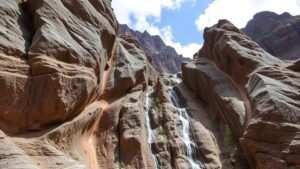Spotting Heavy Mineral Layers in Stream Cross Sections for Gold Recovery
Spotting Heavy Mineral Layers in Stream Cross Sections for Gold Recovery
Gold recovery from stream sediments is a time-honored practice that leverages the natural concentration of heavy minerals in stream beds. Understanding how to identify heavy mineral layers in stream cross sections can significantly enhance the efficiency of gold recovery efforts. This article aims to provide a detailed exploration of the techniques used in identifying these layers, including the geological context, methodology, and practical applications.
The Importance of Heavy Mineral Layers
Heavy mineral layers are formed in river systems due to the differential settling of particles based on density. Gold, being significantly denser than most other minerals, tends to accumulate in these layers. By targeting these regions, prospectors can increase their gold recovery rates substantially.
- Gold density: Approximately 19.3 g/cm³ compared to quartz at 2.65 g/cm³
- Strategic digging locations: Areas where heavy layers settle low in the cross-section profile
Geological Context
The formation of heavy mineral layers is heavily influenced by geological factors such as stream velocity, mineral composition of the surrounding landscape, and historical geological events. Fluctuations in water flow can expose or bury these layers, making it crucial to understand local geology.
- Stream velocity: High flow can transport lighter materials away from the streambed
- Seasonal changes: Changes in water levels can lead to natural sorting of minerals
Methodology for Spotting Heavy Mineral Layers
The process of identifying heavy mineral layers in stream cross sections is both an art and a science. Below are key methodologies used in this pursuit:
1. Visual Observation
Prospectors often begin with visual inspections of stream beds, looking for color changes, textures, and the presence of heavier materials like black sands. Darker minerals often indicate the presence of gold.
2. Sampling Techniques
Collecting sediment samples at various points along the stream can yield significant insights. This involves:
- Creating a grid of sampling sites across the cross-section
- Collecting samples from different depths to account for layering
3. Sieve Analysis
After collecting samples, conducting a sieve analysis is critical. This method involves:
- Using a set of sieves to segregate sediments based on grain size
- Identifying the proportion of heavy minerals, including gold
Case Studies: Successful Gold Recovery
Numerous case studies illustrate the effective identification of heavy mineral layers and subsequent gold recovery:
- California Gold Rush: Prospectors utilized heavy mineral layers in river beds extensively, leading to the discovery of vast quantities of gold.
- Alaskan Mining Operations: Modern techniques in heavy mineral analysis have resulted in increased yields of gold and other heavy minerals, affirming historical knowledge.
Challenges and Considerations
While spotting heavy mineral layers can lead to successful gold recovery, challenges exist:
- Environmental Concerns: Erosion and ecological disruption must be considered during extraction.
- Legal Regulations: Permits and adherence to local mining laws are essential to avoid legal issues.
Actionable Takeaways
To successfully identify and exploit heavy mineral layers for gold recovery, consider the following steps:
- Conduct thorough geological surveys of potential mining sites.
- Employ systematic sampling and sieve analysis to identify promising layers.
- Observe environmental regulations and promote sustainable mining practices.
By arming themselves with knowledge and employing methodical techniques, prospectors can significantly enhance their gold recovery efforts in stream cross sections.

